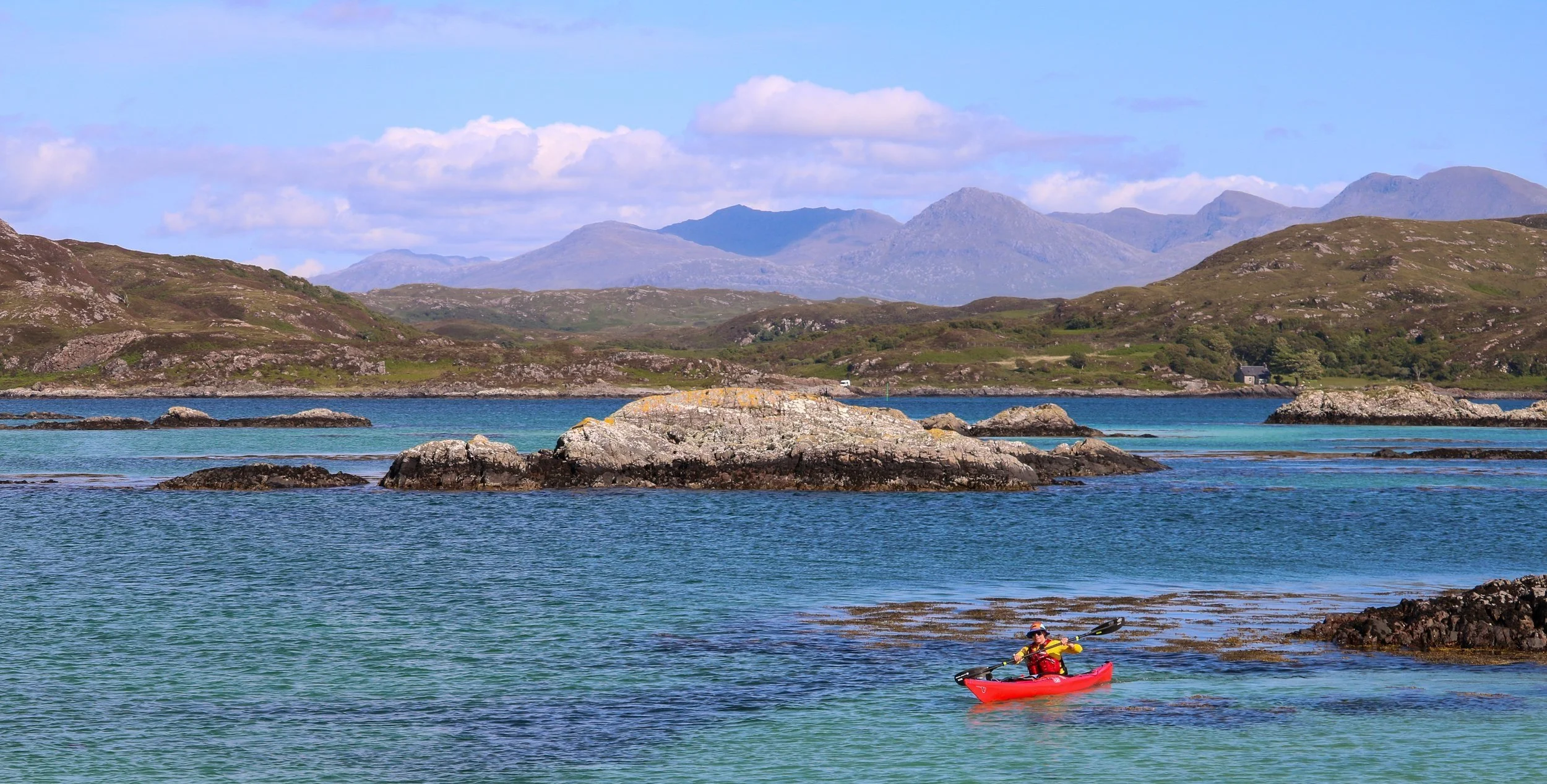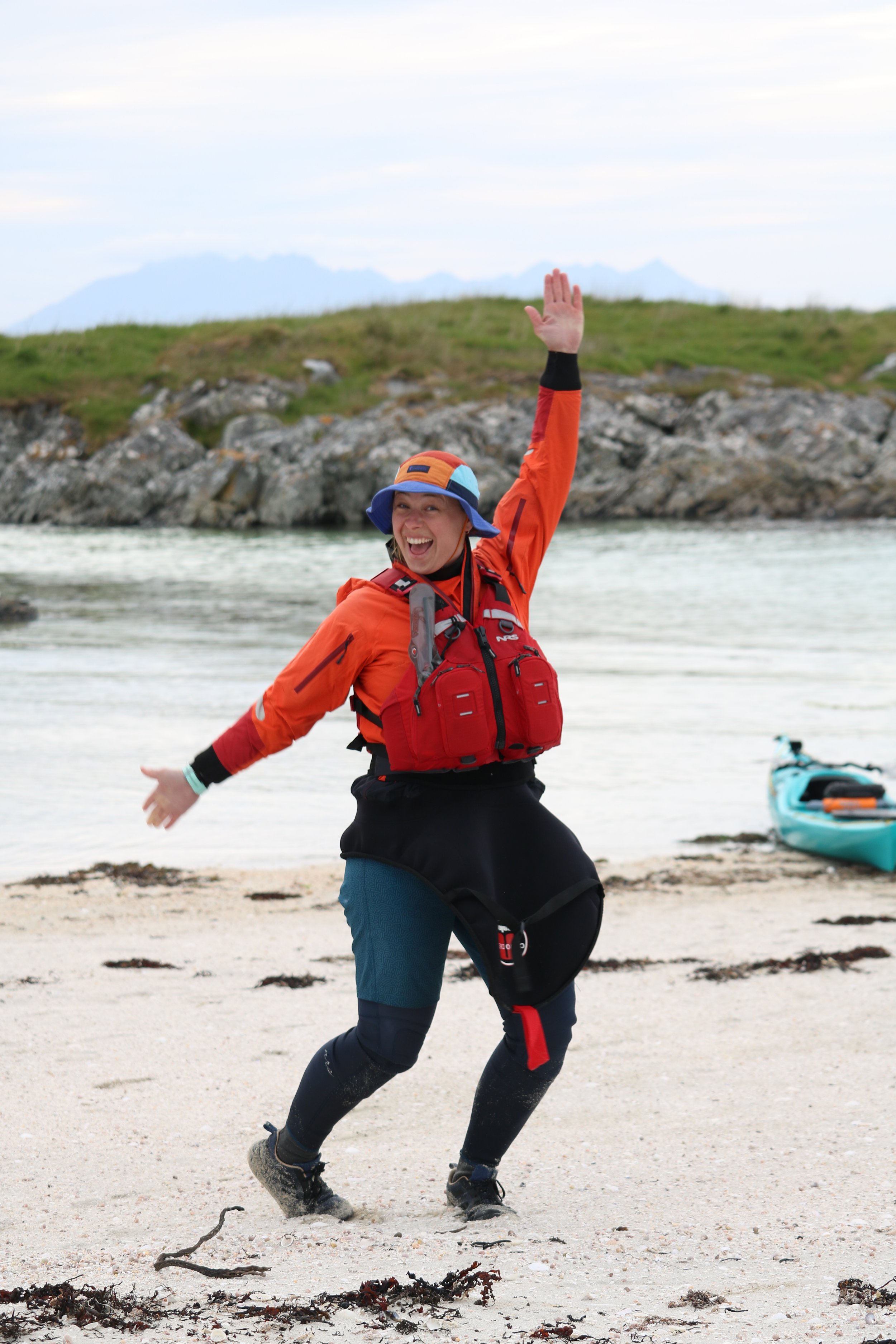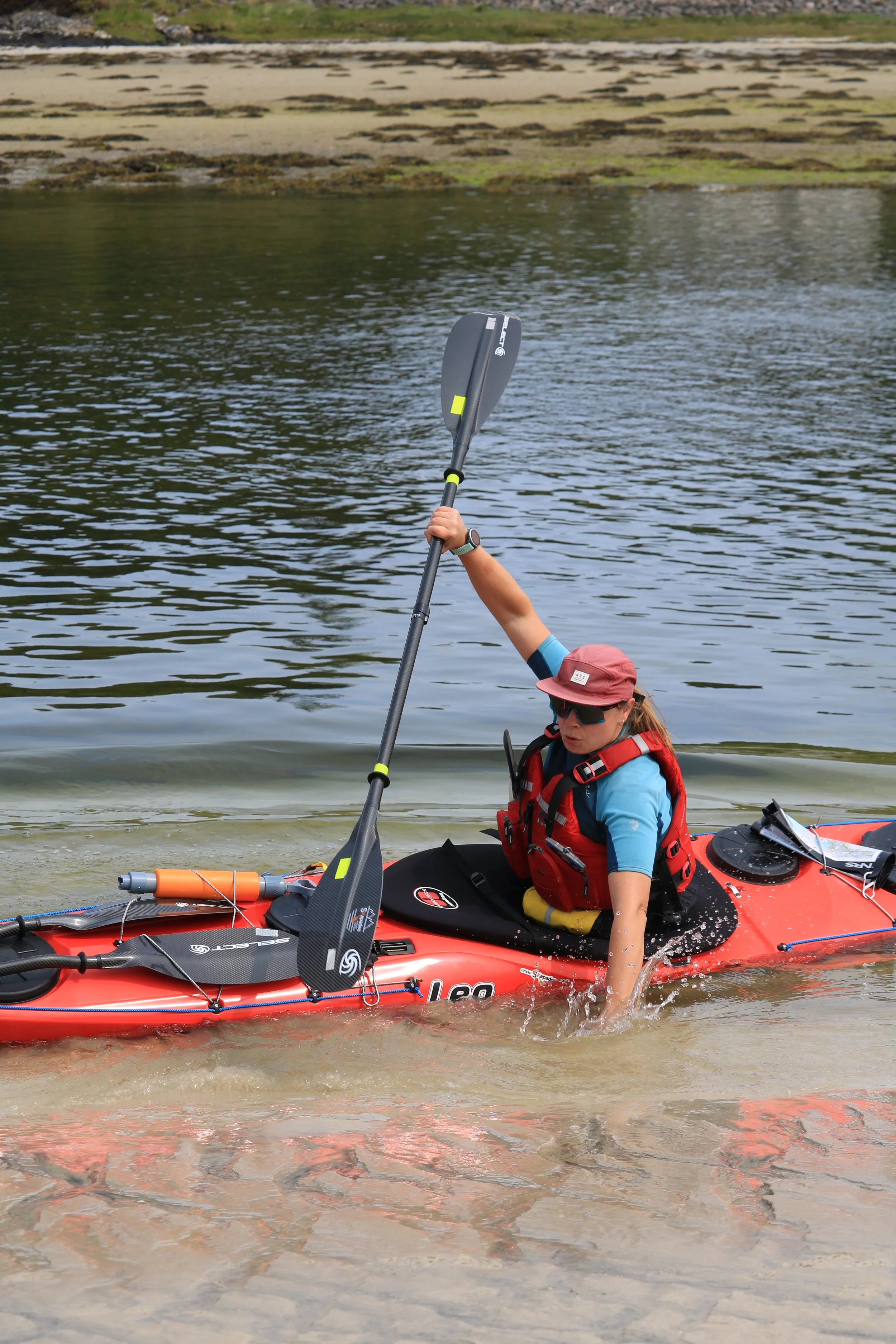
From Canoe to Sea Kayak:
West Coast Wondering and Finding My Sea Legs
Starting Out: Dipping My Toe
I’ve paddled sea kayaks before—dipping a toe in during Uni, work trips, some courses here and there, and some decent holidays on nontidal waters. I’ve even had an amazing experience of tidal races and whirlpools, under the watchful eye of a coach.
Yet, despite having ticked boxes on Paddle UK courses in tidal planning, navigation, and leadership training, the leap to independence—without the safety net of a qualified person on the sea—felt huge. There are just so many variables:
Tides
Swell
The sudden mood swings of the wind
The ongoing consideration of my illness and how quickly fatigue can cloud even the best-laid plans
And one more thing: the sneaky equinox tides, which have caught me by surprise on an estuary before
As a good friend once told me, the sea is trippy!
Committing to the Sea Kayak
Instagram posts of stunning coastlines, wildlife and smiling faces drew me in. I decided it was time to bite the bullet and buy a sea kayak. Online sea kayaking courses helped bridge gaps in my knowledge and gave my confidence a boost -Check out Online sea kayaking courses | Develop your sea kayaking skills, it’s a brilliant learning resource.
After much deliberation, I chose the P and H Leo sea kayak. In the search for a boat that does it all, there are always compromises, but I was happy: the Leo is manoeuvrable enough to play between the rocks and surf, yet large/long enough for longer days and expeditions. My partner, newer to kayaking, went for the P and H Virgo—a solid, stable choice.
Preparing for the Adventure
It turns out getting the boat was the easy part. Before heading north, we wanted to ensure we were well equipped. We popped into the chandlery, my mind buzzing with:
Tidal stream atlases
Charts
Tide tables
All the tools I’d encountered on my course.
To be honest, it was a bit mind-boggling. Thankfully, a seasoned friend reminded me that our guidebook would cover most of what we needed, as long as we kept a keen eye on weather and tide. We weren’t planning major crossings or journeys in strong tidal flow, and I did have the fundamentals.
I was definitely overthinking it!
The West Coast of Scotland Awaits
So, with all the gear and some idea, we drove north to the west coast of Scotland, chasing the beautiful islands off Arisaig we’d seen in photos.
First Paddle: River Morar to Arisaig
Our first paddle began off the silver sands of Morar. Nic suggested we paddle to Arisaig—further than I’d considered, but tempting. That evening, we studied the weather and tidal flows and set off the next day, planning to paddle against the wind and tide and return with them at our backs.
We learned a lot that first experience. Though we managed to paddle against the elements, in reality, it was our holiday—did we really want the slog? We called it, turned around, and had a super exhilarating paddle back, catching the odd wave and watching how the conditions intensified behind us. We made a good decision.
Coastal Calm and Tidal Rhythm
The following day, we relocated and enjoyed the chilled vibes of the coastline, spending endless hours watching the tide’s rhythm and spotting deer wandering by. Growing up in the Midlands, I had never spent much time staring out to sea. It blows my mind—the power of the tides and how such a vast volume of water can rise and fall twice a day. Beautiful and bonkers! It was a humbling reminder of our tiny place in nature.
Evening Paddle to the Islands
Our second paddle was an evening journey to the islands off Arisaig at low tide. There was so much to explore. The sun was low in the sky, the water gentle and turquoise—were we really in Scotland? The sandy shorelines were full of shells and coral from times gone by. The icing on the cake? The seals! Nic’s eyes lit up—she couldn’t believe how many there were. The joy of quietly gliding by in a sea kayak: are these not the best vehicles for exploration at sea?
Rainy Weather and Loch Morar
The following day brought truly awful weather, so we took the kayaks to the shelter of Loch Morar. Once we dragged ourselves out of the comfort of the van, kayaking in the wind proved much less strenuous than canoeing. It was fun to check out the islands on the loch, though not the day for hanging around.
Jellyfish Beach and Changing Tides
Day three took us around to Rhu point beach, straight into another stiff headwind. We landed on a small beach blanketed with hundreds of jellyfish. Safe in our drysuits, we hopped out to stretch and have lunch. We then zoomed back to the Arisaig islands with the tide higher, the whole coast transformed.
Further North: Applecross, Toscaig, and Crowlin Islands
The west coast of Scotland truly is an adventure playground. We couldn’t resist heading further north, climbing over the Bealach na Ba pass to Applecross (I cycled it with a loaded bike a few years ago; as the van struggled up, I couldn’t quite believe I’d managed to ride it).
We visited the Walled Garden for lunch—a must for any foodie—then headed to Toscaig. A teen nipped by in his dad’s Landy, fishing rods on the roof. Life here felt beautifully remote.
From Toscaig, we crossed to the Crowlin islands against the backdrop of the Isle of Skye. We tuned into the tidal movement, watched large boats pass, and kept alert for weather changes. Calm waters and fun channels between islands greeted us, so we sang, danced, and paddled our way around—such a giggle! The birds watched us randomers pass by. My overthinking had been unnecessary; it was a trip we were absolutely capable of. Looking back at the map, I’m amazed at where we went—and we literally cannot wait to go back.
Van Life and Community on the West Coast
Each night, our van was parked in a stunning location. Since the pandemic, campervans have become more popular, but it was amazing to see how the west coast communities have responded. Instead of turning visitors away, they’ve invested in:
Better rubbish disposal
Educational signage
Paid overnight car parks
Facilities for toilet waste disposal
So, we can still enjoy the freedom to roam and this beautiful landscape responsibly. Well done, West Coast—bravo!
Reflections: Lessons from a Canoeist
Back to me being a canoer: I had several light bulb moments, noticing useful crossovers between the crafts. Both canoes and kayaks are long and susceptible to wind. In tidal flow, when eddying in and out, I found the angles and timings quite similar. Canoe trim in the wind is familiar to me; I’ve found using the skeg in the kayak is like shifting my weight in a canoe.
Heading downwind? Drop the skeg completely.
Heading upwind? Lift the skeg up, so the bow grips more and the stern is blown downwind.
Realising (thanks to online sea kayaking) that sea kayaks with momentum point upwind—without momentum, they get blown sideways and start to point downwind—was a bit of an epiphany. Tidy! Changing the footprint and using outside edge turns can feel odd, but it’s something I’ve got used to over the years. We use outside edge turns a lot in canoeing, and in stand-up paddleboarding too!
Both are amazing boats for exploring and expeditions. I just need to use smaller dry bags for the sea kayak. I learned on a past work expedition that you can fit quite a lot in a sea kayak—even with a Dutch oven for bread, gazebo, wine boxes, chairs, and all the camping kit. Not to forget a deck full of driftwood for a fire on the beach.
The Joy of Gentle Adventure
On this trip, I realised that with sea kayaking, there’s no pressure to chase adrenaline or kilometres. Not every trip needs to be about conquering tidal races or surfing standing waves. Sometimes, the best adventures are the gentle ones you plan yourself—a pootle in the shallows, a leisurely picnic on a sheltered rock, good company and great views.
There really is so much to explore on this beautiful island of ours. The hardest part now? Deciding what boat to take next!
























